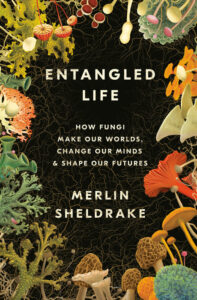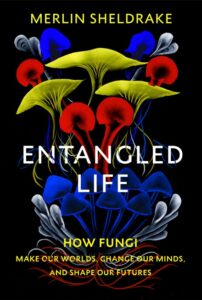 In the recently concluded November elections here in the presently rather dis-United States, my home state of Oregon saw Oregon Measure 109, Psilocybin Mushroom Services Program Initiative (2020) up for public vote. While the measure passed handily, I will openly admit that I was rather skeptical about it – particularly about what it proposed to allow: permit use of psilocybin by licensed therapists for the treatment of certain mental health conditions. As Oregon is somewhat known for its popular acceptance of alternative practices – both medical and otherwise – and as my experiences with psilocybin have primarily been related to the astonishing damage I saw it do to so many back in my university years, I simply couldn’t bring myself to think that the idea was anything more than another bit of questionable hokum put forward by a small and very marginal group.
In the recently concluded November elections here in the presently rather dis-United States, my home state of Oregon saw Oregon Measure 109, Psilocybin Mushroom Services Program Initiative (2020) up for public vote. While the measure passed handily, I will openly admit that I was rather skeptical about it – particularly about what it proposed to allow: permit use of psilocybin by licensed therapists for the treatment of certain mental health conditions. As Oregon is somewhat known for its popular acceptance of alternative practices – both medical and otherwise – and as my experiences with psilocybin have primarily been related to the astonishing damage I saw it do to so many back in my university years, I simply couldn’t bring myself to think that the idea was anything more than another bit of questionable hokum put forward by a small and very marginal group.
Had I taken the time to have yet begun reading the just previously arrived copy of Dr. Merlin Sheldrake‘s Entangled Life; How Fungi Make Our Worlds, Change Our Minds, and Shape Our Futures, I would have found presented within its pages a wealth of information from the noted – and admittedly somewhat unconventional – biologist about the biochemistry and medicinal uses of psilocybin, and as a result may well have interpreted the above cited ballot measure in a wholly different and much more informed light.
 Of course, Entangled Life is about much more than just the one tiny corner of the fungal world where one particular mycotoxin is found; it is a tour of the Kingdom Fungi, presenting to a wide audience an overview of its vastness, its astonishing interconnectedness, its importance to many historical and present day elements of human society, and its seemingly myriad marvels.
Of course, Entangled Life is about much more than just the one tiny corner of the fungal world where one particular mycotoxin is found; it is a tour of the Kingdom Fungi, presenting to a wide audience an overview of its vastness, its astonishing interconnectedness, its importance to many historical and present day elements of human society, and its seemingly myriad marvels.
While I’ve read a number of works about fungi in the past, I’m very impressed indeed with how Dr. Sheldrake presents his subject in this book (as of this writing I’m approximately half-way through it). Many times it has already caused me to interrupt Mrs. Naturalist from whatever I found her doing at the moment in order to share with her something I had just read in the books pages that I found too important or interesting about which not to immediately tell someone.
And on a more superficial level, I’m also impressed with the choice of cover art selected for the respective U.S. ad U.K. editions; the former from Penguin Random House with realist illustrations of select fungi species and the latter from Penguin UK / Bodley Head with a bold primary colour pop-art interpretation of them. Together these two interpretations of the book’s subject matter are delightfully representational of the very different ways fungi can be and have been interpreted by people both past and present, leading me to wonder if the choices were intentional or merely an enjoyable and clever happenstance.
